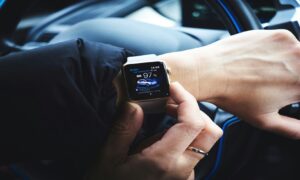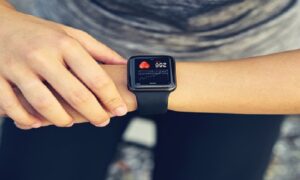In an era where technology and daily life are increasingly intertwined, the fitness industry has not been left behind. The rise of fitness technology, particularly through wearables and applications, is revolutionizing the way we approach physical well-being, making personalized fitness more accessible than ever before. This digital transformation is not just a fleeting trend but a fundamental shift in how individuals worldwide track, manage, and achieve their fitness goals.
The Rise of Wearables
Wearable technology has become a cornerstone of modern fitness. From smartwatches that monitor heart rate and sleep patterns to fitness bands that track every step, these devices offer a window into our physical health that was previously inaccessible on such a personal level. The real-time data collected by wearables empower users to make informed decisions about their health, encouraging a more proactive approach to physical activity and well-being.
One significant advantage of wearables is their ability to personalize fitness. Algorithms analyze individual data to provide tailored workout recommendations, predict potential health issues, and even suggest dietary adjustments. This personalized feedback loop creates a more engaging and effective fitness experience, tailored to the unique needs of each user.
The Power of Fitness Apps
Parallel to the rise of wearables, fitness applications have surged in popularity, offering everything from guided workout routines to nutrition tracking. These apps democratize access to fitness, allowing users from all walks of life to access professional guidance without the need for expensive gym memberships or personal trainers. Moreover, the social features integrated into many of these apps add a layer of motivation and community, crucial for maintaining a consistent exercise regimen.
Fitness apps have also played a pivotal role in making exercise accessible during times when traditional fitness venues were unavailable, such as during the global pandemic. The flexibility and variety offered by these applications have helped many maintain and even improve their fitness levels against the odds.
Consumer Adoption and the Future of Fitness Tech
The adoption of fitness technology by consumers worldwide has been rapid and enthusiastic. The appeal lies not just in the novelty but in the tangible results users see in their health and fitness levels. This widespread acceptance signals a shift in societal attitudes towards health, with a growing emphasis on prevention, wellness, and the integration of fitness into daily life.
Looking to the future, the potential for further innovation in fitness technology is boundless. Integration with virtual and augmented reality offers immersive exercise experiences, while AI and machine learning promise even more personalized fitness guidance. The evolution of wearable technology could soon provide even deeper insights into our health, potentially detecting early signs of illness or advising on optimal nutrition.
Regarding the intersection of nutrition and fitness technology, an expert at Zylo Nutrition shared, “The synergy between fitness technology and nutrition is a frontier yet to be fully explored. As wearables and apps become more sophisticated, integrating dietary advice and nutritional tracking tailored to individual fitness routines will enhance the holistic approach to wellness. At Zylo Nutrition, we’re excited about the potential for these technologies to not only improve fitness outcomes but also to foster a more comprehensive understanding of health among consumers.”
The fitness tech revolution is reshaping the landscape of exercise and wellness, making it more personalized, accessible, and integrated into our daily lives. As we continue to embrace these advancements, the future of fitness looks not only more technological but also more human, with each innovation bringing us closer to achieving our personal health goals.



















































